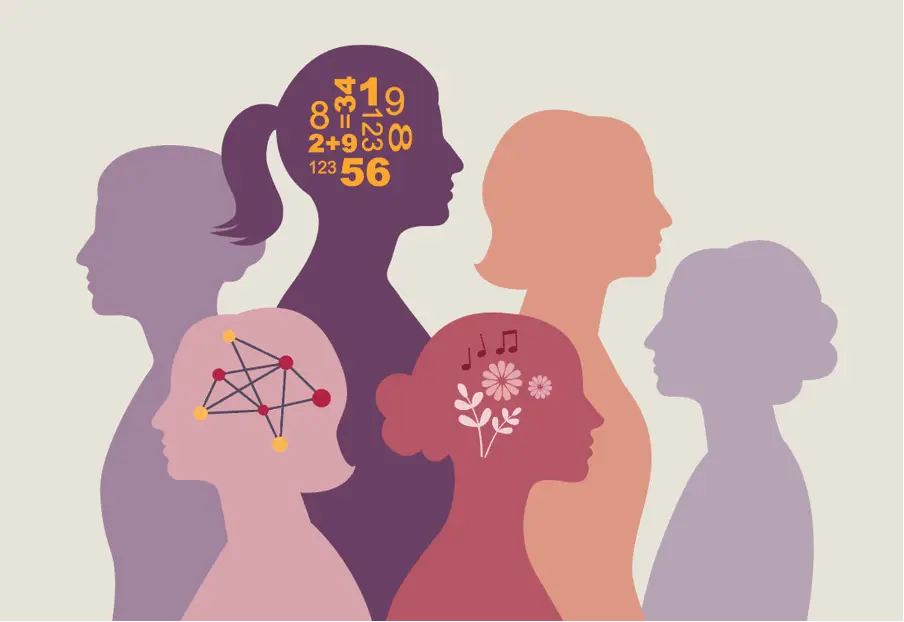This Women’s Month, let us celebrate the unique strengths and contributions of a diverse group of women often overlooked: neurodivergent women. While women continue to break barriers in the workplace, an additional layer of complexity exists for those who navigate the world differently. This article delves into the challenges faced by neurodivergent women, particularly the societal pressure to “mask” their neurodivergence, and explores ways to foster a more inclusive and supportive work environment for them.
What is Neurodiversity?
Neurodiversity refers to the different ways the brain can work, process, and interpret information. It highlights that people naturally think about things differently. Neurodivergent individuals can have different interests and motivations, different ways to process the environment and sensory information from it and are naturally better at some things and poorer at others.
The opposite of neurodiverse (which is everyone who is not neurodiverse) is called neurotypical. Most people are neurotypical, meaning that the brain functions and processes information in the way society expects.
Neurodivergence includes a range of conditions including Attention Deficit Disorders (ADHD), Autism Spectrum Disorder (ASD), Dyslexia and Dyspraxia, and many other conditions and disorders that are still under research.
How Common is Neurodiversity?
It is estimated that around one in seven people (more than 15 per cent of people in the UK) are neurodivergent, meaning that the brain functions, learns and processes information differently.
Neurodivergent people can suffer in the workplace due to their hidden disability and the pressure from society to get them to conform to a neurotypical way of processing the world. National Autistic Society reported that at least 700,000 autistic adults in UK, of which only 15% are in employment. These statistics can be skewed however, as many adults with autism do not have a formal diagnoses, either because they don’t know they are neurodivergent or because they don’t see the need to test as they lived their lives with masking. Remember, if you have always lived and thought in one way, it is very difficult to think you are ‘different’ until someone else tells you. For example, if you have colour blindness, then you do not know the difference between blue and green even when people describe it. As far as you know, they are the same.
The Mask and the Woman Beneath
Many neurodivergent women, including those with conditions like Autism Spectrum Disorder (ASD) and Attention Deficit Hyperactivity Disorder (ADHD), adopt a coping mechanism known as “masking.” This involves suppressing their natural traits and behaviours to fit into societal expectations and avoid judgment or negative social interactions.
Masking can be emotionally draining for women, leading to feelings of exhaustion, anxiety, and depression. It can also hinder their ability to connect authentically with colleagues and build genuine relationships. There is a gender gap in neurodiversity, in that women tend to mask more than men, to the point that there is a delay in diagnosing girls in comparison to boys as girls mask their neurodiversity very well.
Raising Awareness and Building Bridges
It is crucial to recognize that neurodivergence is not a deficit, but rather a different way of experiencing and interacting with the world. Raising awareness within organisations about neurodivergent conditions and their diverse manifestations can foster greater understanding and empathy.
For example, if you know that Amanda, a software developer colleague was diagnosed with ASD, then try to understand her need for clear communication, a quiet workspace, and small changes to routines, her productivity and well-being will improve drastically if you mind her needs. The key here is open communication between neurodiverse and neuro typical colleagues and a willingness to learn from each other.
Furthermore, there are many wrong ideas about what neurodiversity is, and the behaviours of neurodivergent people. For example, many believe that individuals on the autism spectrum do not understand need emotions like empathy, however, research has disproven this misconception as we stated our article on empathy.
Empowering Through Support
Creating a supportive work environment for neurodivergent women involves several key steps:
- Embrace open communication: Encourage employees to feel comfortable disclosing their neurodivergence and discussing their specific needs.
- Understand neurodiversity: Beware of what it is, and the fact that neurodiverse individuals are not all the same. Just like neurotypical people, they are each unique, so there is no one-size-fits-all approach to interact and form relationships with them.
- Provide flexible work arrangements: Offer options like flexible hours, remote work opportunities, and noise-cancelling headphones to cater to diverse preferences and sensory sensitivities.
- Implement inclusive training: Educate employees about neurodiversity, its various manifestations, and strategies for creating a welcoming and supportive environment for everyone.
- Celebrate diverse perspectives: Recognize that neurodivergent women bring unique strengths and talents to the table, such as exceptional attention to detail, innovative problem-solving skills, creative thinking, and strong analytical abilities.
Conclusion & Resources
This Women’s Month, let’s empower neurodivergent women by dismantling the mask and acknowledging their valuable contributions. Through fostering understanding, embracing different strengths, and creating inclusive workplaces, we can ensure that every woman can thrive and reach her full potential. For more information about neurodiversity and masking, we recommend the below reads:
- Unmasked, a best-selling book by female neurodivergent writer Ellie Middleton
- The National Autistic Society numerous resources: https://www.autism.org.uk
- The National Center for Learning Disabilities:https://www.ncld.org/
- The Women’s Health Network: https://www.womenshealthnetwork.com/
- The Organisation for Autism Research: https://researchautism.org/





